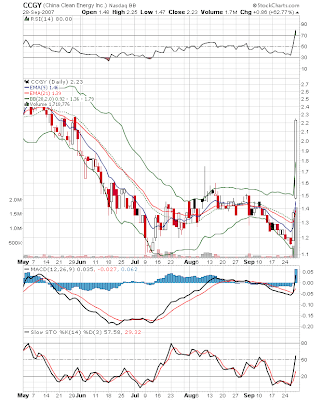In my last post, I mentioned that Berkshire Hathaway was undervalued and a good buy that the current price of $76 per B-share.
It turns out that it’s probably a better buy than anyone expected.
Buffett just announced that he’s spent $10.7 billion buying IBM stock, as well as a few billion dollars on CVS and VISA.
I currently own BRK-B, and I’d like to increase my exposure to it. But I’m strapped for cash.
So how do I make money from being LONG BRK when I’m short on cash?
Time to look at option strategies.
When most investors are bullish on a stock, they buy CALL options on it. They fork over some money (called a premium) and have an option to buy that stock at a specific price (called a strike price) at a future date. If the stock price exceeds your strike price, then you’ve made money.
One problem with this approach is that the recent volatility in the market has increased the premiums on options.
Another problem with this approach is that usually, investors lose money on options. Most commonly, the options expire worthless because the stock price didn’t hit your strike price. And sometimes investors paid too much premium, so that despite exceeding the strike price, they still end up losing money overall.
Let’s look at an example.
Consider the BRK-B, Jan 2013 $75 CALL option. It’s currently selling for $10.50, which means on each contract (1 contract is 100 shares), you’d pay $1,050.
So, in January 2013, unless BRK-B is trading for more than $85.50, you’ve lost a thousand dollars!
A better way is to use PUT options.
When you buy a PUT option, you’re paying a premium and you have the right to sell a stock to someone at a specific price at a future date. You make money if the stock price declines below the strike price. You would enter this contract if you were bearish on the stock.
However, if you SELL a PUT option, you receive a premium. In return, you must buy the stock if it declines below a certain price. If the stock goes up in value, then you get to pocket the premium. So you would only enter this contract if you were bullish on the stock.
Being bullish on BRK-B, and short of cash, I’ve taken a short PUT position.
As I outlined in my previous post, I think BRK-B is worth $112 and has a floor below $72.
I sold the Jan 2013 $60 PUT for $4.50. This means I collected $450 per contract.
If BRK-B drops below $60 per share, I will be forced to buy the stock.
However, based on the premium I collected up front, my purchase price will be $55.50 or 50% of what I think is the intrinsic value.
Mostly likely, the option will expire worthless and I’ll get to keep the premium.
This also how you can turn around the high premiums to work in your favor.
If I didn’t already own BRK-B, I would go for a higher strike price. Most likely, I would sell the Jan 2013 $80 PUT for $11. This would allow me to collect $1,100 per contract.
Of course, the risk that I would be assigned the stock would also be much higher. But I would be comfortable owning this stock at an effective price of $69 per share ($80 strike price – $11 premium = $69).
Option trading is not without risk.
It’s easy to over-leverage and wipe out your portfolio. I use this strategy with great caution and with a lot of forethought.
You also need the highest level of option trading and a margin account in order to sell puts.
A trade like this one usually has a 20% margin requirement. Which means, I need at least $1,200 in margin. Based on that margin a $450 premium would represent a 37.5% gain in 14 months. Not too shabby.
If you’d like to learn more about option trading, I strongly recommend The Bible of Options Strategies: The Definitive Guide for Practical Trading Strategies. It’s a excellent primer on various option strategies.
Disclosure: If it wasn’t already obvious, I’m long BRK-B. Both the stock and by selling puts.



![p[Get 77% returns with this stock newsletter]](http://i243.photobucket.com/albums/ff92/reallykool/AD_newsletter.jpg)